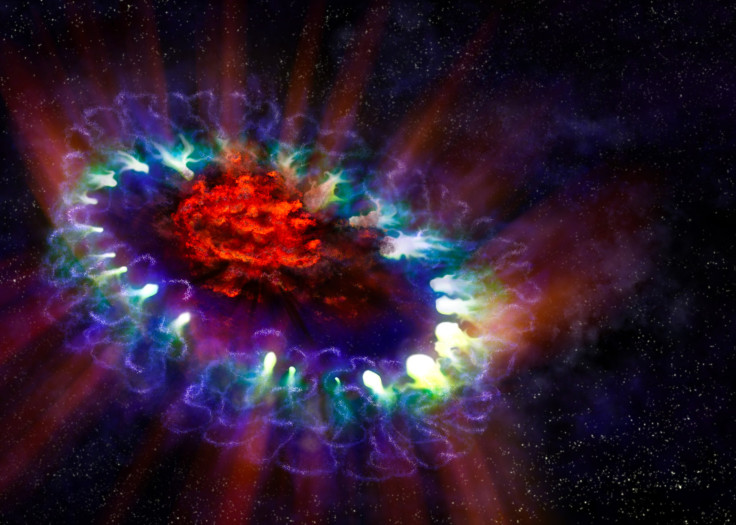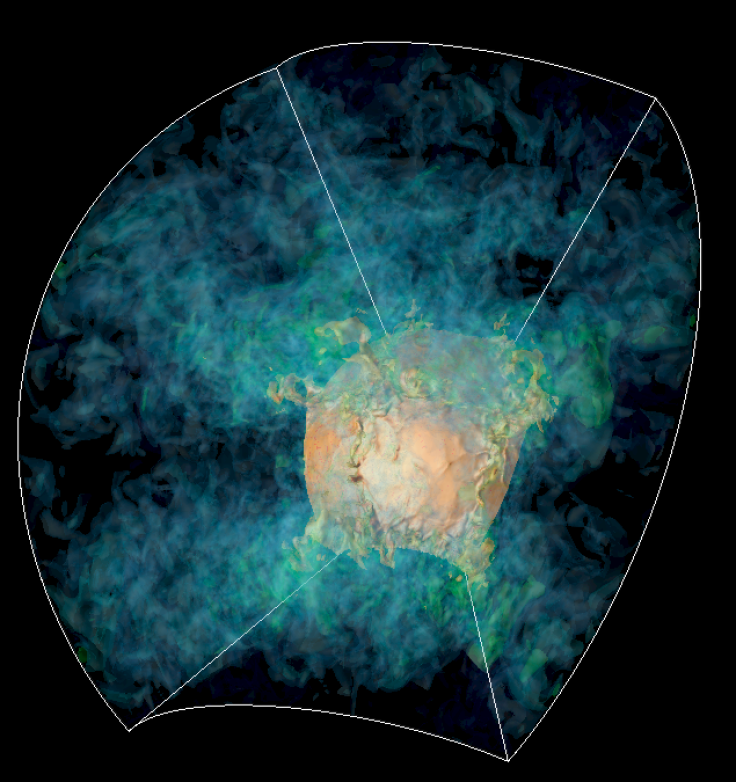Supernova In 3D: The Final Moments Before A Star Explodes Is Like A Pot OF Water Boiling Over
Researchers have created a new 3D model of the final moments before a star explodes. Instead of a “calm before the storm” moment, the end of a star is a chaotic and messy event as the star continues to eject material before the big explosion.

The research was led by W. David Arnett, Casey Meakin and Nathan Smith, all from the University of Arizona, and Maxime Viallet, from the Max-Planck Institute for Astrophysics, reports AIP Publishing.
Previous supernova simulations are carried out in two dimensions with researchers theorizing what will happen in the third dimension. According to the researchers, a star is made up of layers, with heavy elements such as iron in the center and layers of lighter elements closer to the surface of the star. A supernova can be caused the core collapse of a star. The gravitational pull of the star’s core causes the star to collapse into itself resulting in the death of the star known as a supernova.
According to the researchers, the gravitational collapse occurs when the contraction of the star, caused by the gravitational pull of the heavier elements, creates enough pressure and increase in temperature to produce neutrinos, subatomic particles. As neutrinos get ejected from the star, the lighter elements lose the energy to counteract the gravitational pull of the heavier elements, causing the star to go supernova.

The new 3D model reveals a messy event prior to supernova and lets researchers gain new insights to what causes a supernova and what occurs in a supernova remnant. Arnett said in a statement, "We still have the concentric circles, with the heaviest elements in the middle and the lightest elements on top, but it is if someone put a paddle in there and mixed it around. As we approach the explosion, we get flows that mix the materials together, causing the star to flop around and spit out material until we get an explosion." The research was published in AIP Advances.
© Copyright IBTimes 2024. All rights reserved.












